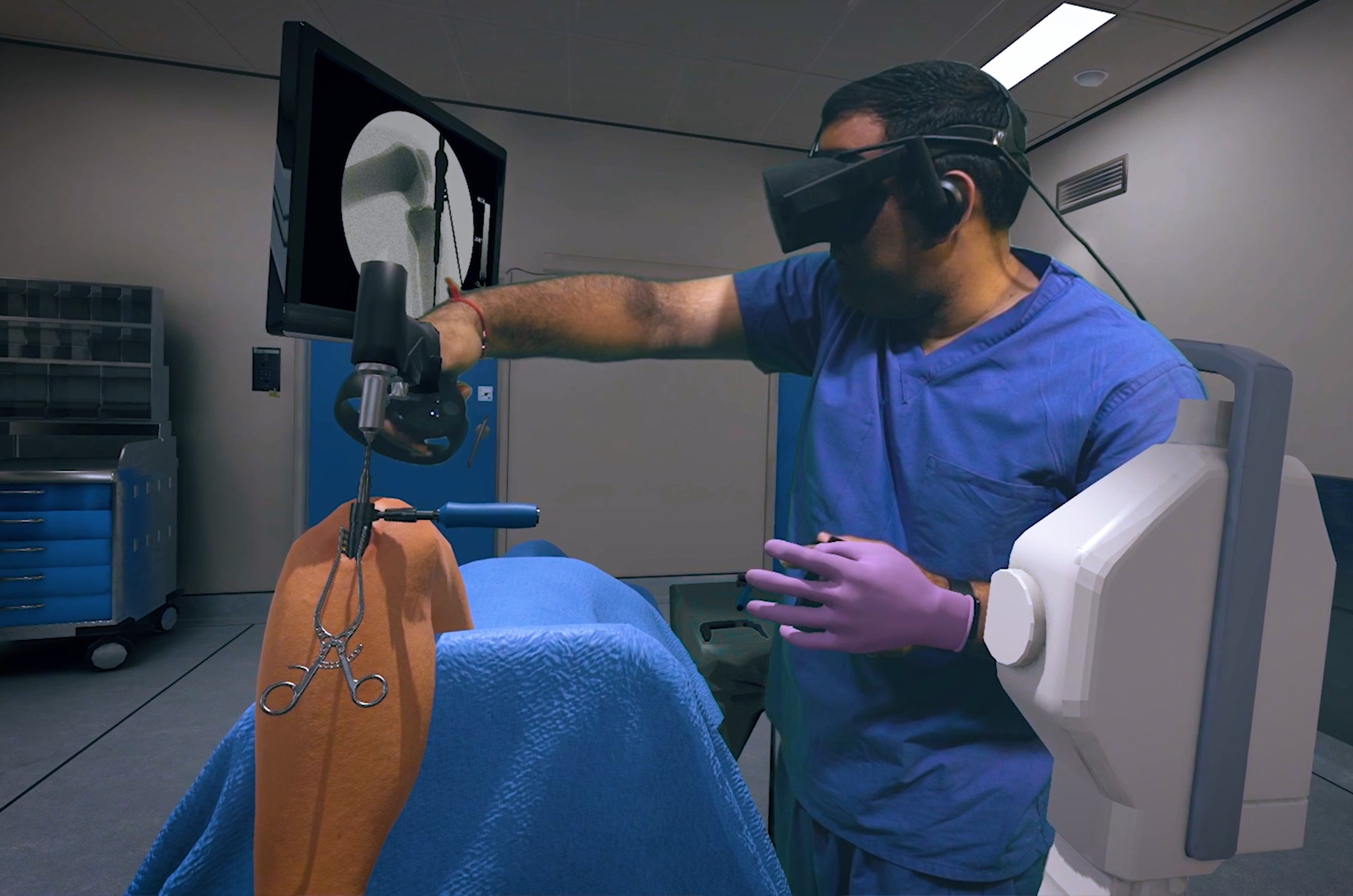With an increasing number of procedures in residency, combined with decreased operating room time, more than 20 percent of medical graduates are unable to operate independently, according to an Osso VR press release.
To bridge the growing training gap among surgeons, Dr. Justin Barad and Matt Newport founded Osso VR in August 2016. The software company builds a virtual reality-based surgical training platform that allows students, and even established doctors, to get hands-on experience with new procedures.
Users can put VR headsets on and begin simulating any surgical procedure, wherever and whenever it’s convenient for them. Osso VR allows users to pick up tools and simulate surgical procedures multiple times to perfect their skills and explore new techniques. Virtual reality training closes the “course-to-case” gap by preparing medical professionals for, and supplementing, bioskills training courses.
Osso VR’s mission is to improve patient outcomes, increase the adoption of higher value medical technology and democratize access to modern surgical techniques worldwide.
Osso VR’s team is made up of academic clinicians, medical device industry veterans and professional game developers who have worked for companies such as Microsoft, Activision, EA, Nintendo, Unity and Zynga, according to a press release. Their experience combines technology and medical advancements to improve medical education.
Dr. Justin Barad, the CEO and founder of Osso VR, is a former game developer turned orthopaedic surgeon. Based on his experience, he knows it can be difficult to learn surgical procedures with limited practicing opportunities.
Residents go through extensive studies and are involved with many surgeries, but their hands-on training is limited. Residents usually only operate on one cadaver before performing surgery on a real patient. After, there is little technical practice between bioskills courses and inpatient use, Barad said. The process of learning while doing can be dangerous in the fast-changing medicine industry.
“The learning curves for these techniques can be over 100 cases, and complication rates are sometimes 300 percent higher during the early phases of learning,” Barad wrote in a press release.
The innovative training solution is already transforming the way students prepare to perform surgery.
Recently, UCLA used Osso VR in a clinical validation study. In the study, medical students were randomized to two groups. 1. VR training and 2. “Traditional” training. Each participant performed a sawbones version of the simulated procedure, then each student was graded according to the global assessment scores in a blinded fashion.
The results showed the VR-trained students nearly doubled the scores of the traditionally-trained students, according to Barad. The publication/presentation release is pending.
In October, 2017, the U.S. Department of Education announced Osso VR as the winner of the EdSim Challenge. The company was selected out of about 250 participants. After earning the win for the competition, Osso VR received $430,000 in cash and additional prizes from IBM and Microsoft.
Michael Wooten, the Education Department’s deputy assistant secretary for career, technical and adult education, said Osso VR will improve training.
“Osso VR’s immersive environment will enhance the career and technical education students are receiving along their career pathways in the healthcare field,” Wooten said in a press release.
You may also be interested in:
- 9 New Discoveries Set to Change Medicine
- Cooling Caps Prevent Hair Loss in Chemotherapy Patients
- iPhone Ultrasound Device Detects Cancer
- Smart Stitches Sewn Into Wounds Reveal Healing Process

